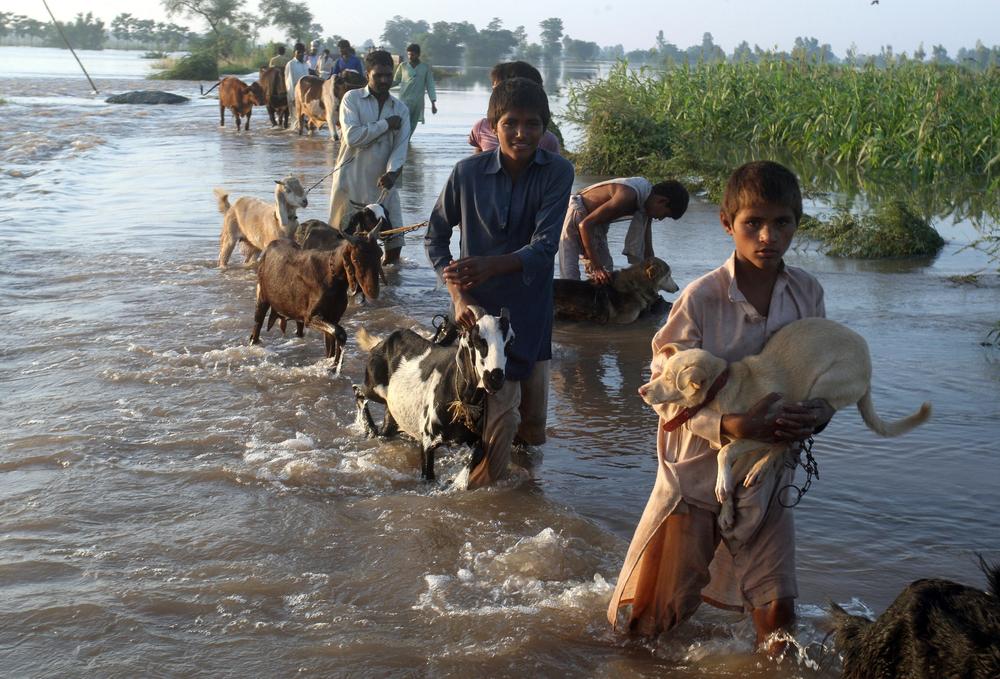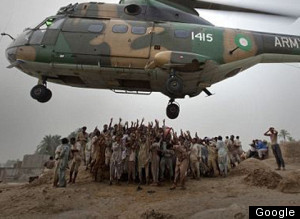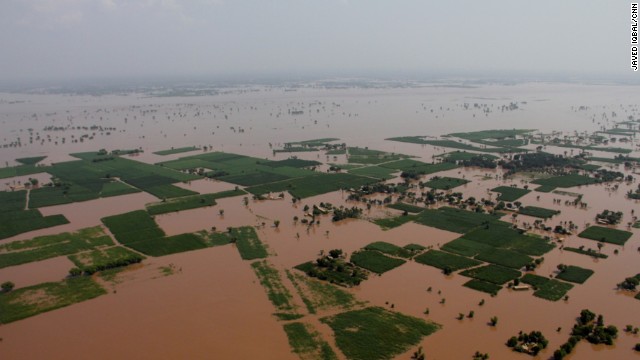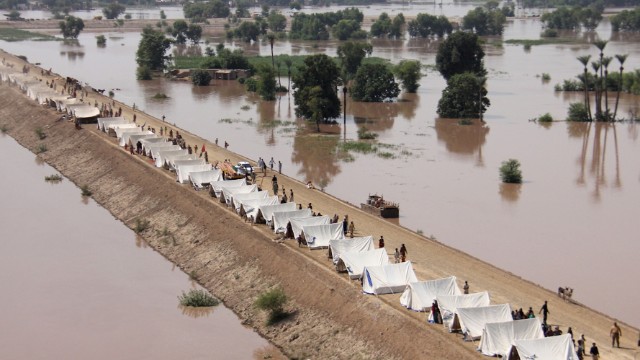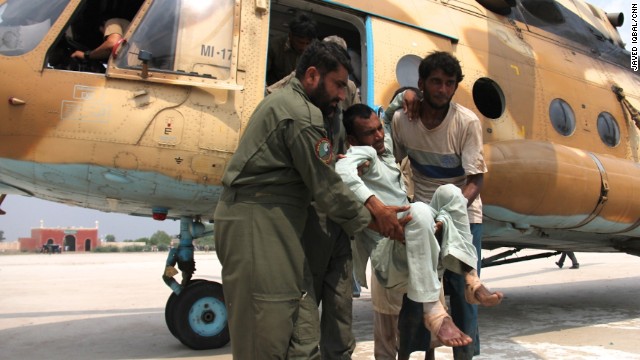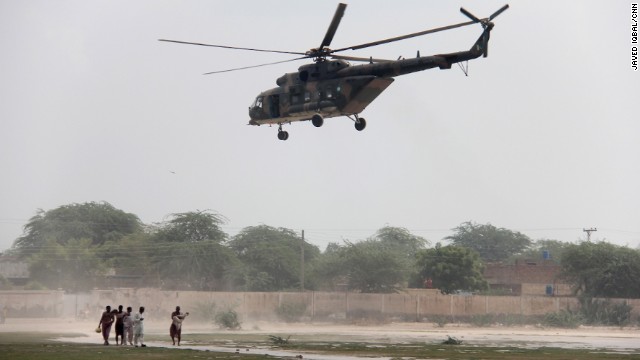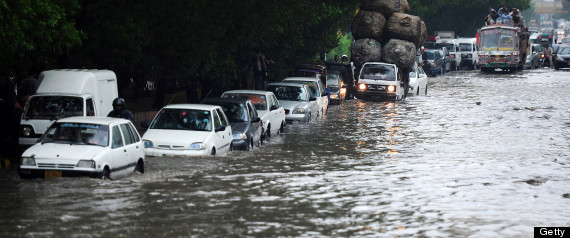The situation is still dire:
Chenab advancing furiously on villages - Pakistan - DAWN.COM
Chenab advancing furiously on villages
By
Khalid Hasnain |
Majeed Gill |
Malik Tehseen Raza
Published about 12 hours ago
MUZAFFARGARH: Flood survivors sit on a damaged road on Monday, looking at what appears to be a waterfall.—Reuters
LAHORE/MUZAFFARGARH/BAHAWALPUR: After inundating over 60 per cent area of Muzaffargarh tehsil, the violent waves of Chenab River are now posing a threat to rural areas of Jatoi and Alipur tehsils in Muzaffargarh district.
The water discharge at Panjnad headworks in Bahawalpur district was rising, but the flow of 413,000 cusecs recorded at 9pm on Monday was stated to be within manageable limits. Irrigation authorities posted at the headworks said that a breach in the right marginal dyke, as anticipated earlier, might not be required.
“We expect that the pick will not be more than 450,000 cusecs before the water falls into the Indus River. And in Indus, there will be a maximum flood of about 500,000 cusecs that will pass Guddu and Sukkur barrages on Tuesday and Wednesday,” a senior official at the Flood Forecasting Division (Meteorological Department) told Dawn.
He said the danger of high flood in Guddu and Sukkur had subsided after dykes were breached between Qadirabad and Panjnad. Since the designed capacities of the two barrages were 1.2 million and 900,000 cusecs respectively, the flow of 500,000 cusecs, and even more, would not be a problem, he added.
According to the official, the Trimu barrage (in Jhang), which saw a peak of 600,000 cusecs, was now in low flood (150,000 cusecs).
The flood water in Muzaffargarh started touching the Ring Road near Tulheri after inundating Bhuttapur, a suburb. The Shehr Sultan dyke was under threat and the administration ordered evacuation of people from rural areas of Alipur and Jatoi.
The people of Muzaffargarh city and the villagers of Dalewala and Langar Sarai clashed at Dalewala when the former tried to plug a breach on the road to stop the water from reaching the city. The villagers resisted the move because it would have inundated their areas.
Over 2,000 villagers attacked MNA Jamshed Dasti, prompting a baton charge from police. Mr Dasti reached the area to see the breach and reportedly supported its plugging, angering the villagers. They beat him up and broke his jeep’s windows. Mr Dasti saved his life by fleeing on a motorcycle.
When DCO Hafiz Shoukat Ali went to the area with his team and police, the villagers chanted slogans and also tried to attack him. Police sprang into action and dispersed them.
Earlier, the district government made a breach in the Doaba bund, diverting the water towards areas where it had never reached earlier. Besides Alipur and Jatoi, towns of Khangarh and Sher Sultan were also under the threat of flood.
DCO Karim Bukhsh said Muzaffargarh city was out of danger because the floodwater had turned towards Sher Sultan and Alipur.
Camped at Panjnad, Bahawalpur irrigation zone’s chief engineer Malik Khurshead Zaman said “we are trying to avoid making a breach in the right marginal dyke”. He said strong water currents had eroded a two-acre mound in Chenab upstream Panjnad, easing pressure on the dyke.
Like Muzaffargarh, people along the right marginal dyke were also opposed to its breach. MNA Sardar Gopang, along with a large number of villagers, visited Panjnad and said that the authorities should wait and take a decision after a thorough deliberation.
Meanwhile, the ISPR said army troops carried out rescue and relief operation in the villages of Makhan Baila, Bakhtiari and Bella Jhallan of Ahmedpur East tehsil and shifted the flood-affected people to camps and other safe places.
The Met department forecast isolated thunderstorms in Rawalpindi, Gujranwala, Lahore and D.G. Khan divisions and Gilgit-Baltistan and Azad Kashmir.
It said Tarbela Dam had 1547.37ft of water on Monday, with inflow recorded at 84,300 cusecs and outflow at 54,700 cusecs. The water level at Mangla was 1242ft, with inflow 79,979 cusecs and outflow of 79,979 cusecs.
The National Disaster Management Authority said that till Sept 15, 312 people had lost their lives because of rains and floods – 232 in Punjab, 66 in Azad Kashmir and 14 in Gilgit-Baltistan.
Over two million people have been affected. About 500,000 people have been rescued and shifted to safe places in Punjab alone.
Published in Dawn, September 16th, 2014
